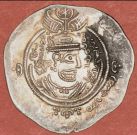HONG KONG (MarketWatch) — China’s securities regulators have given the go ahead for a mutual fund to invest in foreign exchange-traded gold funds, potentially tapping interest among mainland China investors who face negative real interest rates on their bank deposits and want to hedge against inflation.
 Lion Fund Management Co. said they received approval from the China Securities Regulatory Commission on Monday to proceed with the fund, the first of its kind for mainland China, according to a statement posted on the Beijing-based fund provider’s website.
Lion Fund Management Co. said they received approval from the China Securities Regulatory Commission on Monday to proceed with the fund, the first of its kind for mainland China, according to a statement posted on the Beijing-based fund provider’s website.The fund has been granted permission to invest outside of China under the Qualified Domestic Institutional Investor (QDII), the fund managers said in the statement.
The fund will invest in gold-backed exchange-traded funds operated outside of China, though the fund provider’s statement didn’t specify which ETFs, or which markets, it was considering.
Hong Kong launched its own gold-ETF earlier this month, back by bullion held at a government-run depository at the city’s international airport. See report on Hong Kong’s first locally backed gold ETF.
The QDII scheme enables financial institutions to invest in overseas markets and is widely seen as a vehicle to allow capital outflows from China at a time when the currency is not freely traded, prohibiting China’s vast pool of savers from investing abroad.
One-year yuan deposits at the Bank of China Ltd., for example, fetch 2.5%, with the People’s Bank of China having last hiked its policy rate by a quarter-point in October.
However, cash kept in these savings accounts are actually losing purchasing power at a dramatic rate, as with consumer prices in October 4.4% higher than they were a year earlier, and with the inflation rate expected to hit 5% in December, according to estimates by Bank of America- Merrill Lynch.
The state-run China Daily said Tuesday that the new gold fund was the first of it its kind to be available to mainland investors.
More funds could be on the way soon, as several other fund providers have pending applications for similar products, seeking to tap rising interest among mainland Chinese investors for precious metals, the report said.
By Chris Oliver, MarketWatch




